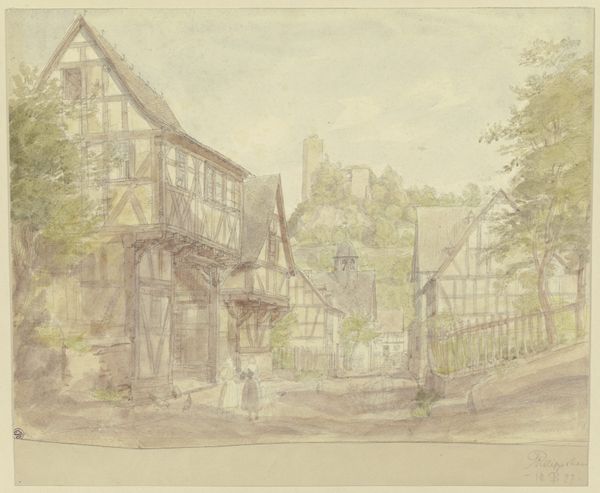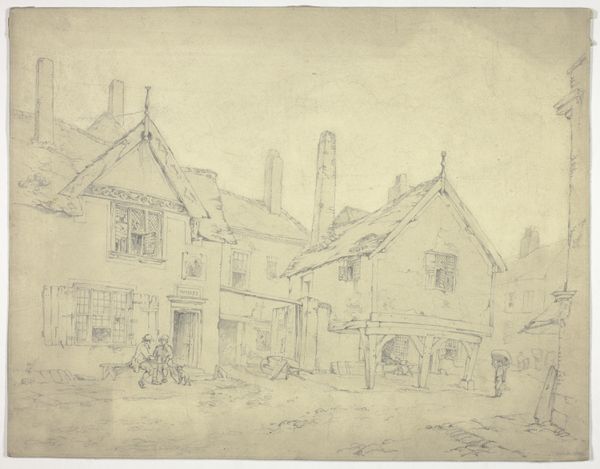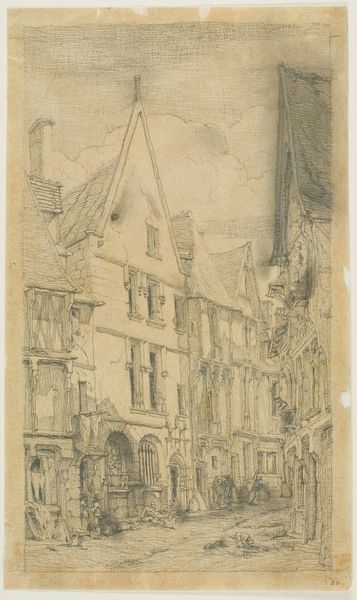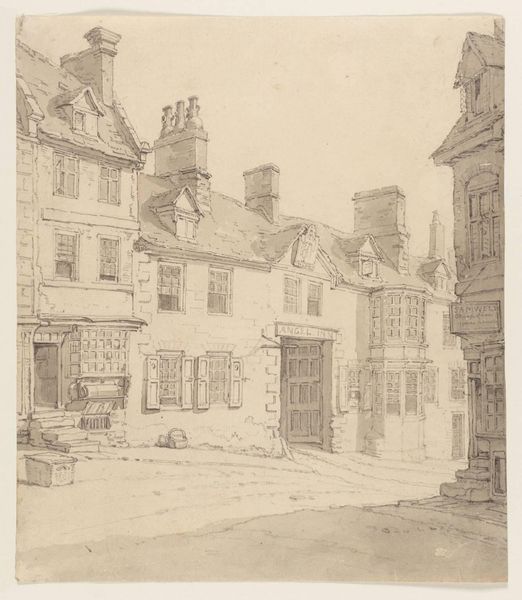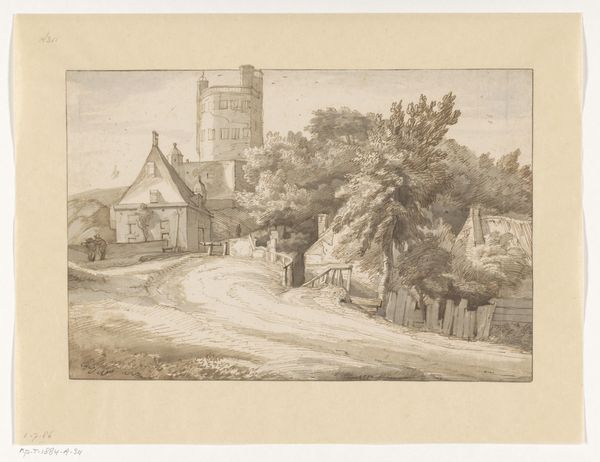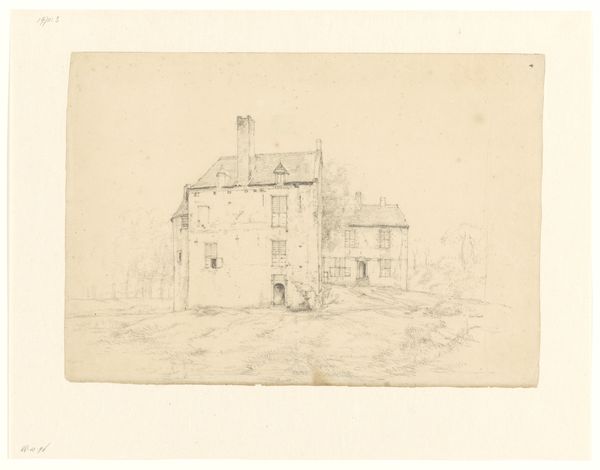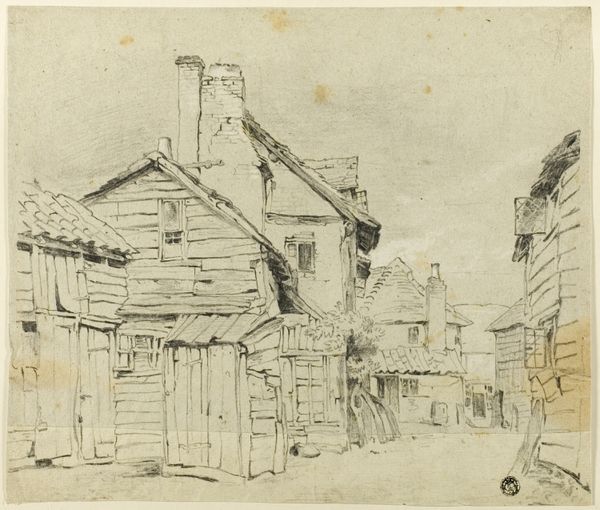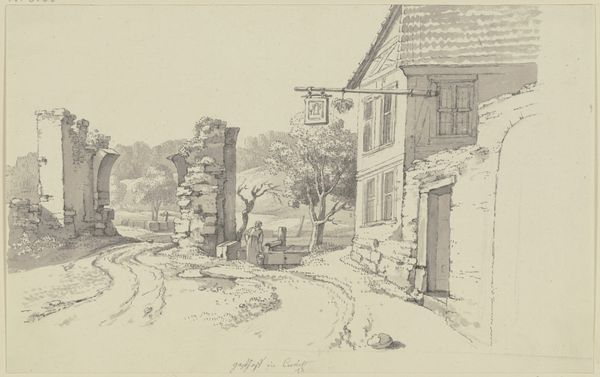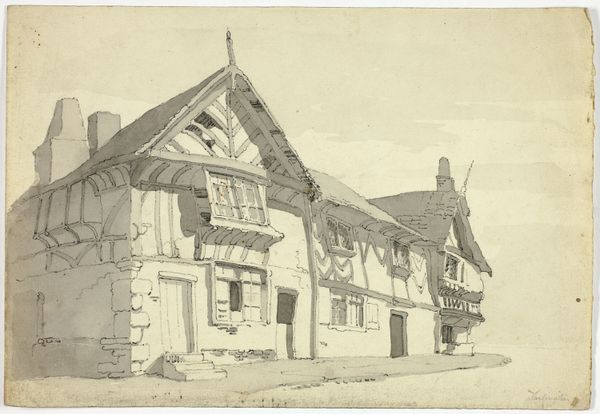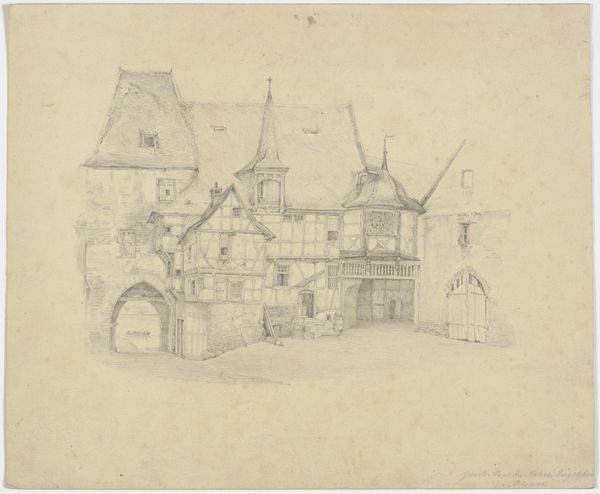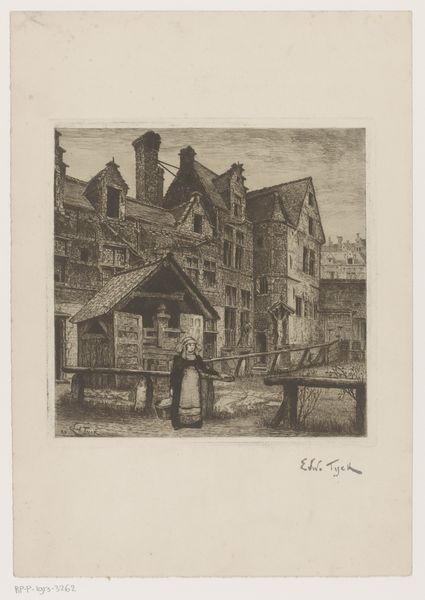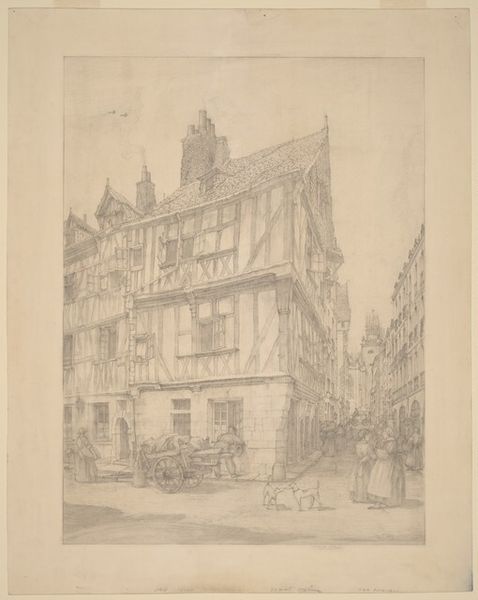
Copyright: Public Domain
Curator: Here we have Wilhelm Amandus Beer's "Street in Münzenberg," rendered between 1854 and 1859. The piece employs graphite, ink, and pencil on paper, currently residing here at the Städel Museum. What are your initial thoughts? Editor: There’s a definite stillness, an almost ethereal quality to the composition, primarily arising from the monochromatic palette and soft lines. It feels like a memory fading into the past. The architecture dominates, creating a play of form. Curator: Indeed. The academic approach of Beer allows us to decode the structures. The romantic inclination frames buildings within the romantic cityscape; observe how he articulates their placement relative to one another and the tower in the background. Editor: Yet it's not simply about form, it’s the texture. Look at how Beer uses different pencil weights and strokes to mimic the uneven surfaces of the buildings. You can almost feel the rough stone and weathered wood. I wonder where the materials came from? How were these crafted, and by whom? Curator: A fair point. His choices do infuse materiality within representation. However, consider how the architectural mass shapes visual hierarchy, where he compels viewers toward the rounded shape of the distant tower through linear recession, lending symbolic importance. Editor: Symbols perhaps imposed after the physical reality of the labor and its place within the network of materiality that built it. How does the work of building shape community here, not merely aesthetic pleasure of looking? These walls had to be made somehow, stone cut, timber joined; and the landscape was then affected and then pictured. Curator: It’s compelling to view it from your position. For me, the organization of form and surface represents more of an appeal towards timeless visual orders within Romanticism itself. Editor: For me it provokes contemplation on a broader field. Curator: Perhaps a fruitful dichotomy for the attentive mind of a modern viewer. Editor: Indeed; layers to unpack, revealing history, work and artistry that continues now.
Comments
No comments
Be the first to comment and join the conversation on the ultimate creative platform.
